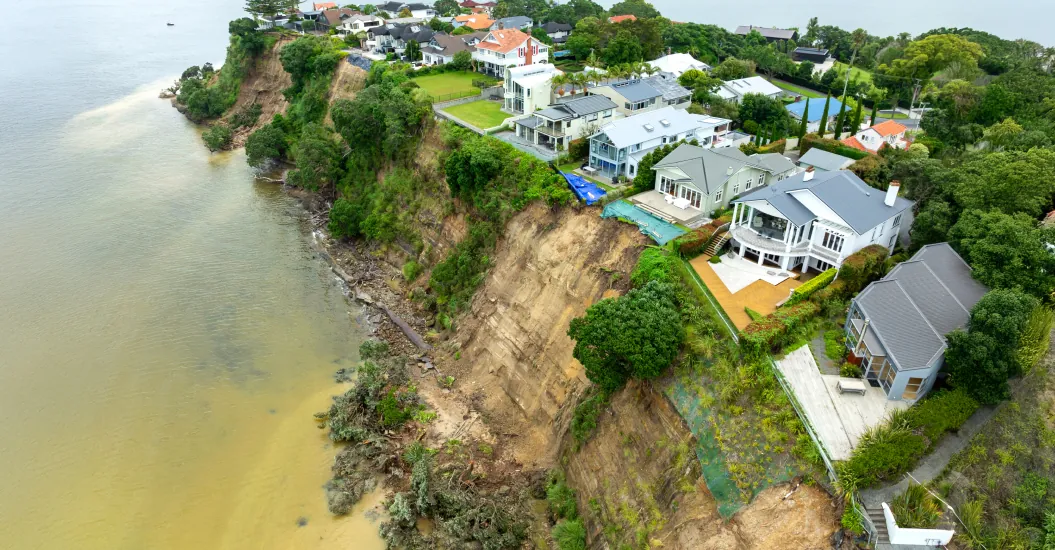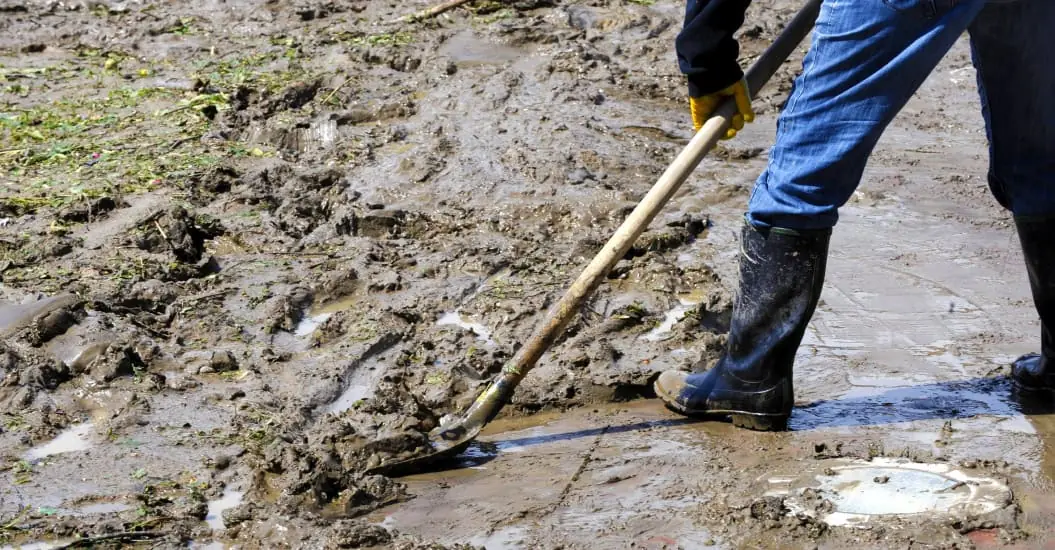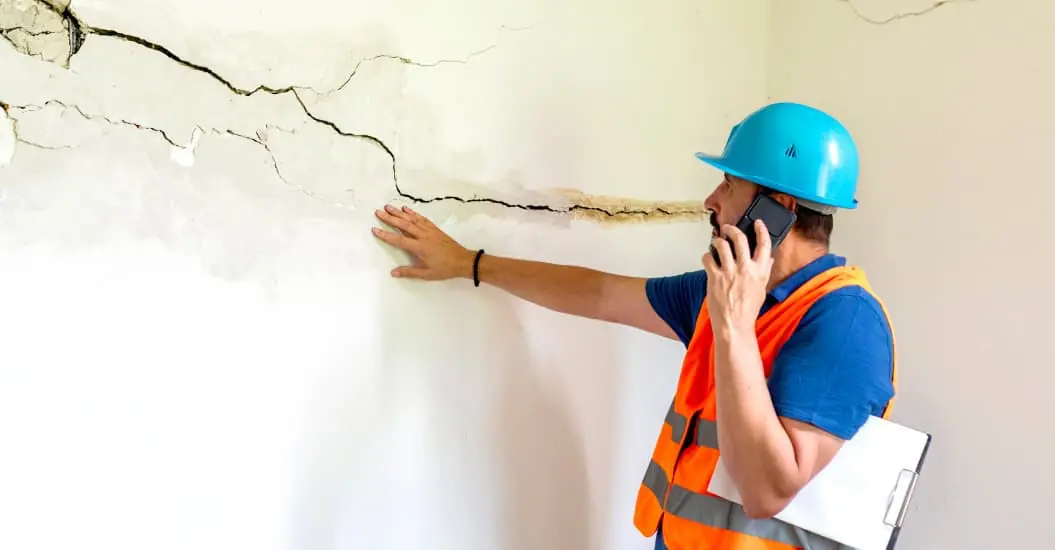New Zealand has many active volcanoes so it's important to know what you can do before, during, and after an eruption to help reduce the impact. Being prepared can make a big difference for you, your family and your home.
Take a look at our guide on what to do before, during, and after a volcanic eruption to help keep everyone safe and try to minimise any damage.
Before a volcanic eruption
Assess your volcanic risk
If you live in areas such as Auckland, Bay of Plenty, Tairāwhiti, Hawke's Bay, northern Manawatu, Northland, Taranaki or Waikato you're more likely to deal with volcanic ashfall.¹
If you're in one of these regions, it's especially important to be prepared because volcanic ash can cause health issues and damage your home. Find out more on how volcanic activity can impact your home.²
Create an emergency plan
You can make an emergency plan online with Get Ready. Having a plan in place will reduce the stress of the unknown if your family knows what to do in an emergency. Make sure every family member knows the plan, and practice regularly!
Prepare your grab bag
Everyone in the family should have a small grab bag with essential supplies in case you need to leave home quickly. Think about what you use every day and how you'd manage without these essentials. Your home's water supply can be affected by the volcanic activity, so having bottled water is important. See a list of what to pack in your grab bag.
Protect your home
If you have time after a volcanic warning, here are some things you can do to help protect your home.
Check your insurance: Make sure your house and contents cover is up to date and you're happy with the amount you're covered for.
No insurance? If your home or belongings suffer any damage from a volcanic eruption, you'll want to have insurance in place to cover any loss.
Use our house insurance calculator to estimate the cost of rebuilding your home. Our contents insurance calculator can help you work out the value of your belongings and estimate the cover you need.
Secure your home: Prepare for ashfall and minor tremors by securing heavy objects, protecting entryways, and covering outdoor areas like vegetable gardens and pools.
Seal your home: Close all windows and doors tightly. Use tape or plastic wrap to seal openings and cracks to keep ash out.
Protect your HVAC systems by turning them off and covering them.
Inspect your roof and gutters: Make sure your gutters are clear and securely attached, as they can collapse under the weight of the ash. It's important to prioritise your safety when cleaning your gutters or checking your roof.
- Wear gloves and safety goggles to protect yourself from dust and debris.
- Make sure your ladder is stable and on solid, level ground, or use a ladder stabiliser for extra safety. It's a good idea to have someone with you to hold the ladder and pass you tools.
If you have a roof-collected rainwater system, consider installing first-flush diverters to keep ash out of your water supply.¹
Check out our tips on how to clean your gutters for more guidance.
Keep a record: Take photos of your home if you can. These can be really helpful if you need to make a claim later.
For more tips on protecting your home from an eruption, check out advice from Civil Defence.
Stay in the loop
If you're in a high-risk area¹, stay connected with your local community. Get familiar with the local warning system and evacuation plans. Sign up for alerts and notifications. Make sure you have a radio and spare batteries in your grab bag to hear the latest advice and instructions from Civil Defence.³
During a volcanic eruption
Evacuate
If you're told to evacuate, do it right away. Don't wait until the last minute as roads might get blocked. Wear protective gear like a properly fitted mask, goggles, and clothes that cover your arms and legs.
If you can't leave or have been told to stay indoors, turn off your air-con, and close all the windows, doors and any fireplace vents to keep ash out. Use damp towels to cover any gaps or vehicles. ⁴,⁵
Avoid low-lying areas
Stay away from river valleys and low-lying spots since they can get hit by mudflows and floods during an eruption. It's safer to head to higher ground.
Avoid any restricted zones set by officials. Even if the volcano isn't visibly erupting, its effects can spread far and wide, causing mudflows, flash floods, wildfires, and hot ash.³
If you need to drive, do so carefully. Falling ash can make it hard to see and cause roads to become slippery. It can also damage your car if it gets into moving parts.
Keep connected
Stay in touch with your family and friends and keep them updated on how you're doing. Text messages or social media are great for this since phone lines might be overloaded, and you'll want to keep those clear for emergency calls.
Your battery-operated radio will be useful to get the latest updates and emergency information from Civil Defence.
After a volcanic eruption
Keep safe
After any volcanic activity, it's really important to make sure everyone at home is safe. Wait until you get the official all-clear before heading back home. Here are some tips to help keep you and your family out of harm's way:
- Drink bottled water instead of your home's water supply, which might be affected by volcanic activity.
- If you hear a hissing noise or smell gas, it could be a gas leak. Get everyone out of the house right away and turn off the gas at the mains. Don't turn it back on until a professional checks it.
- If there are fallen or sparking power lines near your property, keep yourself and others at least 10 metres away. Call 111 and stay clear of any trees or cars in contact with the lines.
Temporary accommodation
If it's not safe to go back into your house, stay out until Civil Defence gives the okay. Depending on how long this will be, you may need to find temporary accommodation. If you have house insurance with us, we'll cover reasonable temporary accommodation costs if your home becomes uninhabitable due to a covered loss, or if you're prevented from entering by government or local officials. This benefit even includes kennel or cattery fees for your family pets.*
Once you've arranged temporary accommodation, keep your receipts so we can review them as part of your claim.
Document the damage
Before you start cleaning up, take a good look around your home for any structural damage, internal damage, and damage to your belongings. Document everything to help with your insurance claim. Here's what you'll need:
- Photos or videos of the damage.
- A list of everything that's damaged, no matter what it is.
- Purchase receipts for the damaged items, if you have them.
Make a claim online
The quickest and easiest way to make a house, landlord, vehicle, or contents claim is online in My Tower. You can even upload supporting documents and photos to help us validate your claim twice as fast. The more information you give us, the easier it is to process your claim.
Once we've received your claim, we'll review it and get things started. You'll be assigned a claims manager who'll make any necessary arrangements such as referring you to one of our repair or supply partners. If you need to contact your claims manager, you can easily find their details in My Tower.
Don't have a My Tower account? Register here now to quickly make a house, landlord, vehicle, or contents claim online, wherever you are. For other claims you can use our online claims form.
For more info, check out our blog for a rundown on what to expect when making a house insurance claim after a natural hazard event.
Start the clean up
Once you've documented the damage and made your claim online, you can start getting things back in order.
Before cleaning up any ash, wait for advice from Civil Defence or your local council. Protect yourself by wearing a tightly fitted mask, goggles, sturdy shoes, and clothes that cover your arms and legs. Volcanic ash is different from regular ash and can irritate your skin and make it hard to breathe.
Start by cleaning up any ash inside your home first. Use small amounts of water to rinse things or a vacuum cleaner.
Wait until the ash stops falling before cleaning outside. When it's safe, hose down the roof to clean any ash off or bring in the professionals with specialist equipment. For hard surfaces like driveways, dampen the ash with a bit of water and sweep it with a broom.¹ Check with your local council for their advice on disposing of the volcanic ash.
You can find more tips on cleaning up after a volcanic eruption from Get Ready.
We're here to help
We're always here for you. Simply log in to My Tower to make a claim or to contact us for further support.
By following these steps, you can help ensure you and your loved ones are prepared for a volcanic eruption. Stay safe and keep informed.
* For all of these benefits, please read the policy wording and cover documents to understand the terms, conditions, excesses, limits and exclusions that may apply.
The links we provide to third-party websites are for your convenience and do not constitute any endorsement or authorisation by us. The information provided on this page is general in nature and is not intended to be professional or legal advice. Tower does not accept any liability for the accuracy or content of information on this website that belongs to third parties or on any third-party website.

Looking for house insurance?
Save $200 on new, eligible house insurance policies with promo code SWEETDEAL.*






